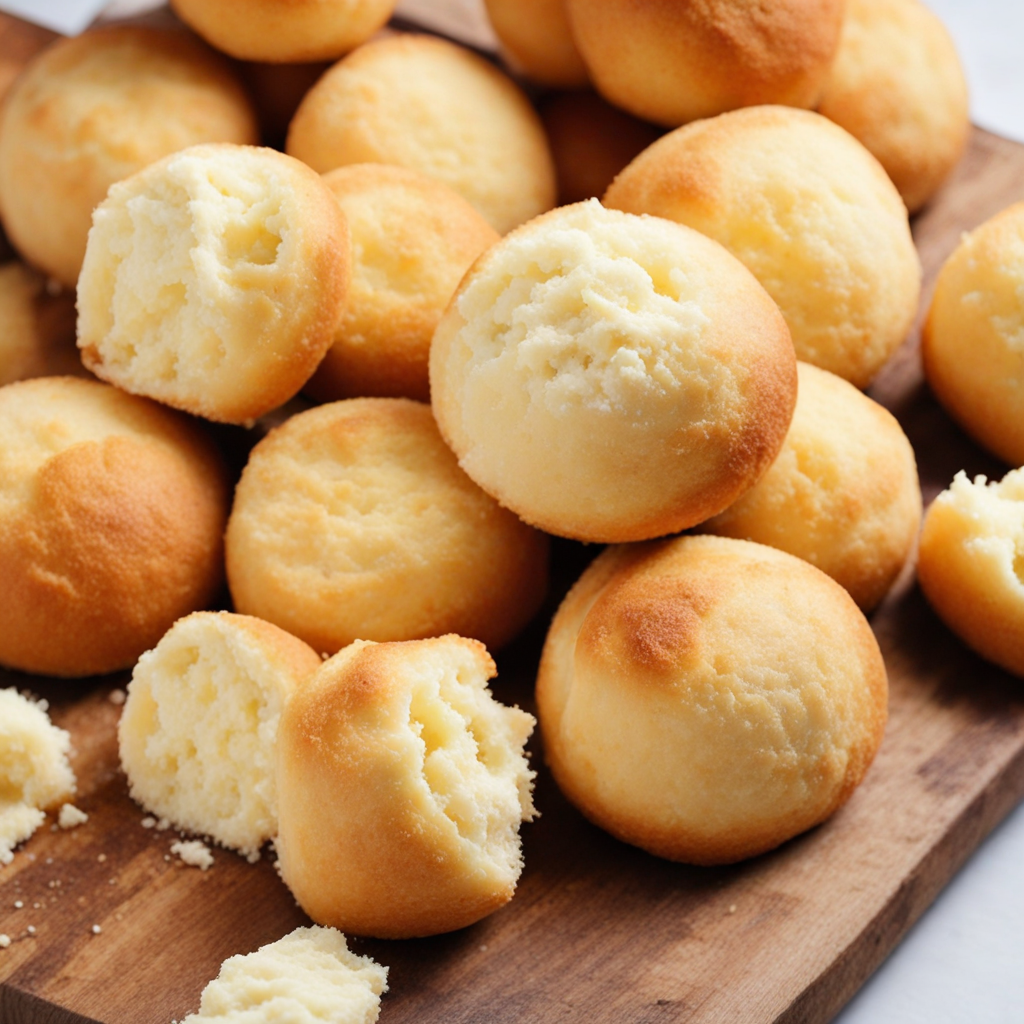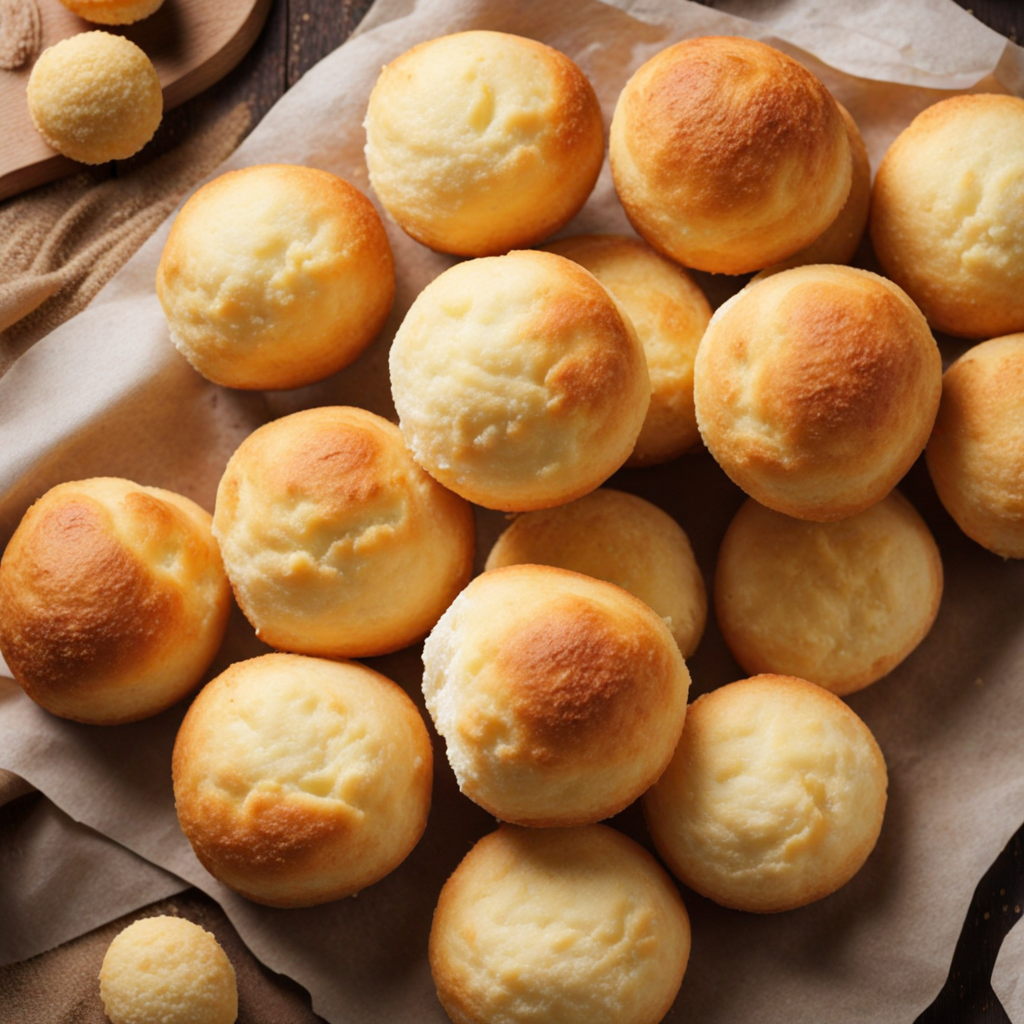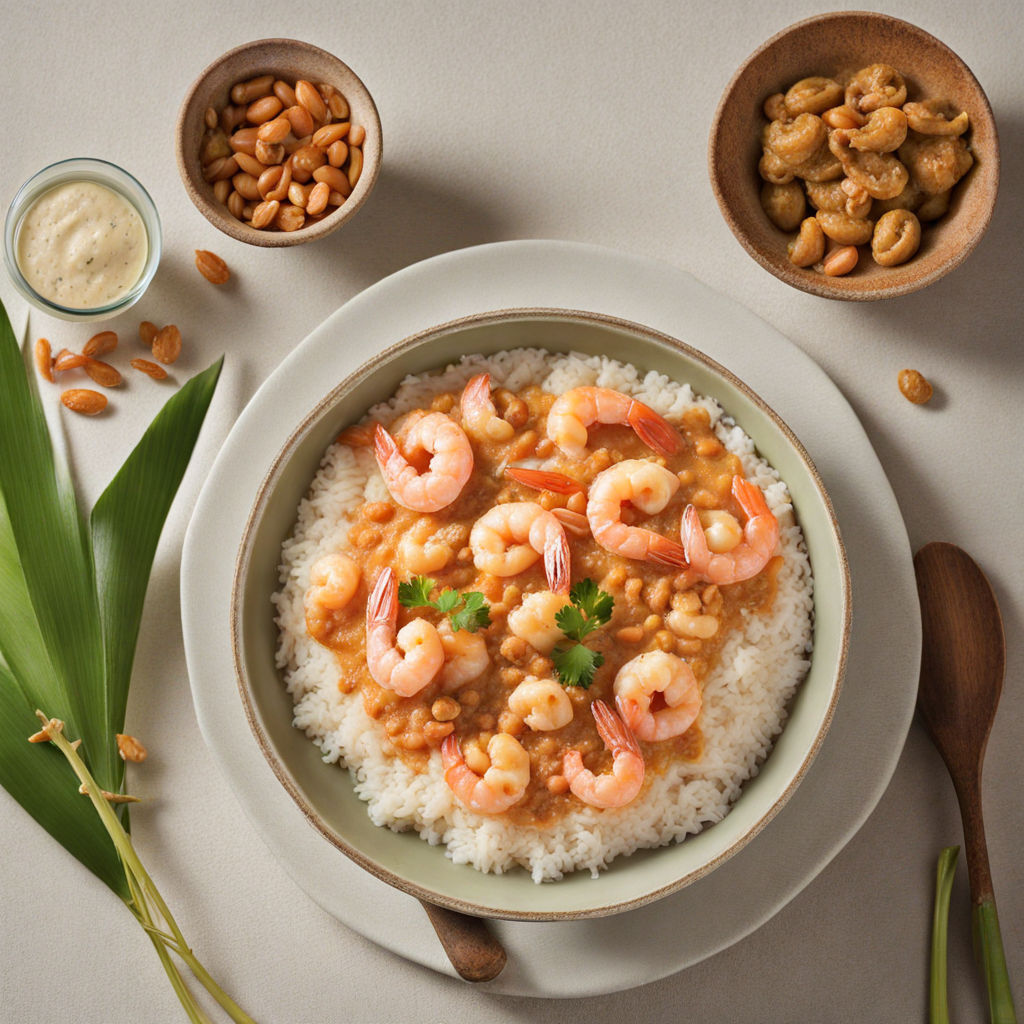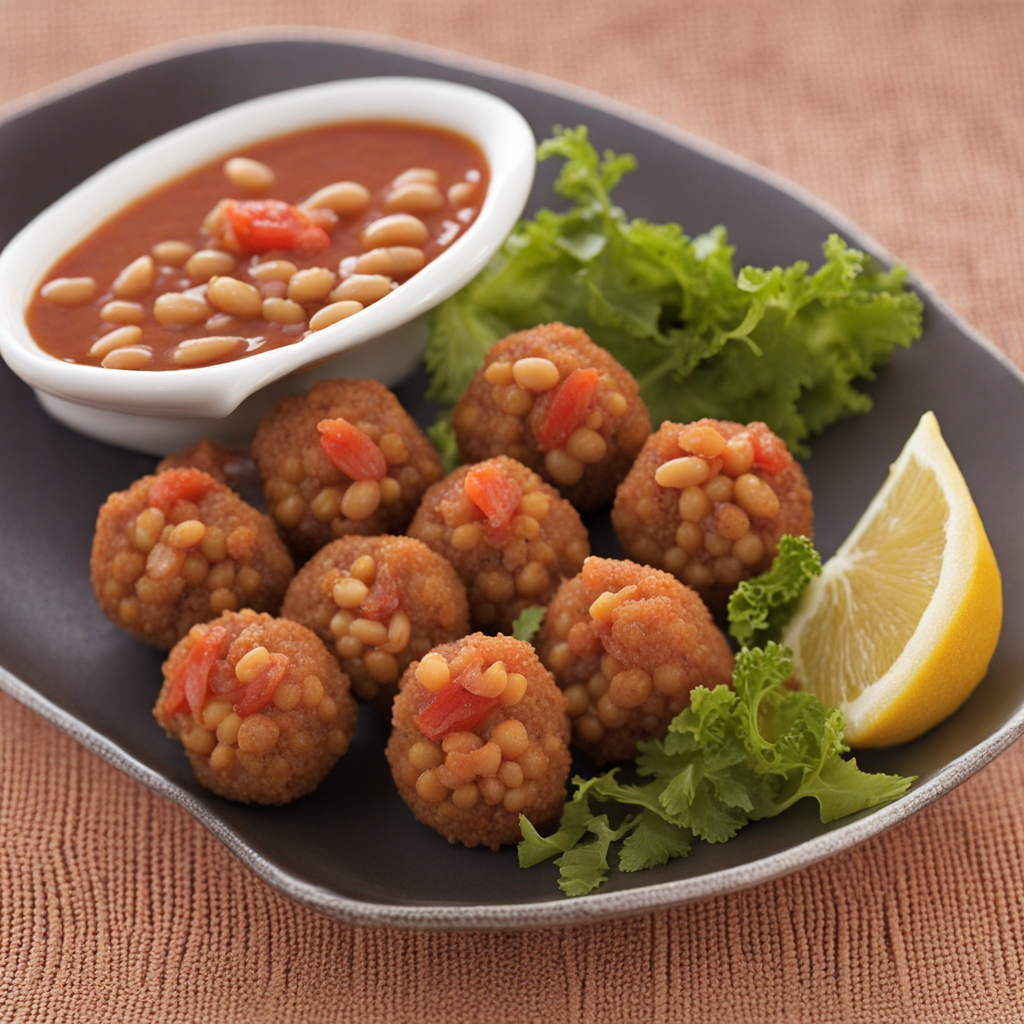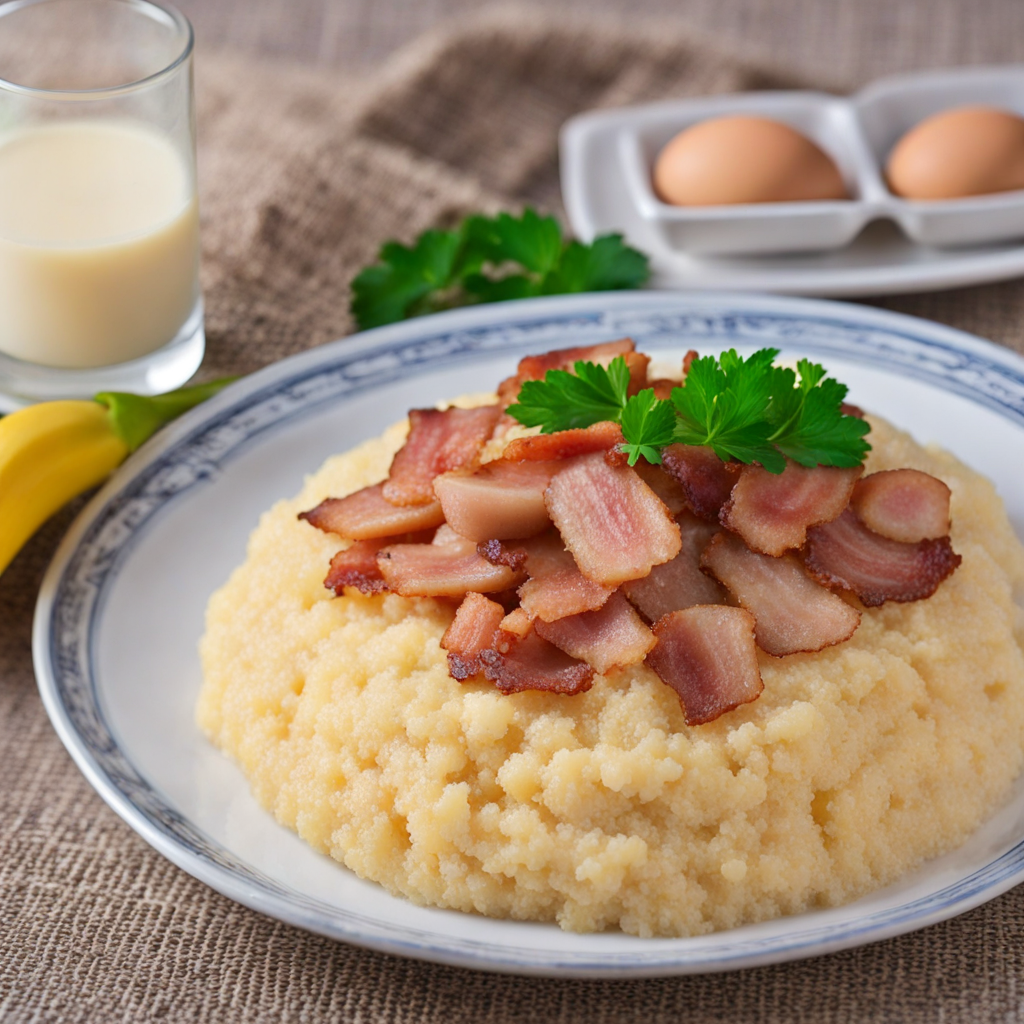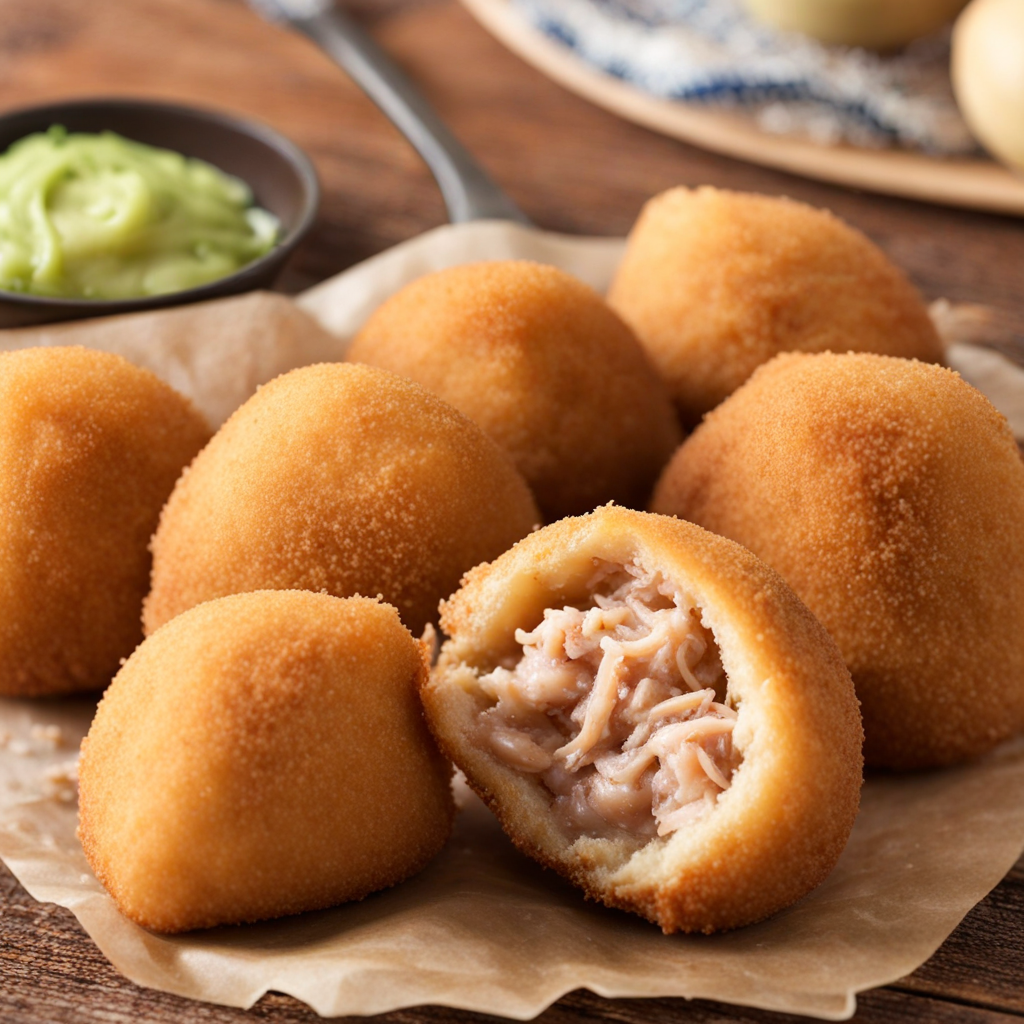Pão de Queijo
Pão de Queijo is a delightful Brazilian snack that embodies the country's rich culinary heritage. These small, round cheese breads are made primarily from tapioca flour, which gives them a unique chewy texture that is both light and satisfying. The dough is typically mixed with a generous amount of cheese, most commonly Minas cheese, which imparts a savory flavor that is unmistakably delicious. When baked, they puff up to create a golden-brown exterior that is slightly crisp, while the inside remains soft and airy, creating a perfect contrast in texture that is hard to resist. The flavor profile of Pão de Queijo is a harmonious blend of nuttiness from the tapioca flour and the rich, creamy taste of the cheese. The cheese melts beautifully during the baking process, resulting in a gooey center that oozes flavor with every bite. Some variations may include additional ingredients like herbs, spices, or even different types of cheese, which can enhance the taste and add unique twists to this traditional snack. These bites are typically enjoyed warm, making them the perfect treat for any time of day, whether as a breakfast item, a snack, or an appetizer. Pão de Queijo has become a beloved staple not just in Brazil but also around the world, celebrated for its gluten-free nature and its ability to cater to various dietary preferences. They are often served at parties, gatherings, and cafes, where their irresistible aroma and inviting appearance can draw anyone in. Pair them with a cup of coffee or a refreshing beverage, and you have a delightful experience that will transport your taste buds straight to the vibrant streets of Brazil.
How It Became This Dish
Pão de Queijo: The Cheesy Delight of Brazil Pão de queijo, a small, chewy cheese bread, has become a beloved staple in Brazilian cuisine and a symbol of regional identity. With its golden crust, soft interior, and distinct cheesy flavor, it is a favorite snack and breakfast item throughout Brazil and beyond. The story of pão de queijo is intertwined with the history and culture of Brazil, reflecting the country's rich culinary tapestry, indigenous influences, and the legacy of European colonization. Origins: The Birth of Pão de Queijo The origins of pão de queijo can be traced back to the state of Minas Gerais, in southeastern Brazil, during the 18th century. The region was known for its dairy production, particularly cheese, and had an abundance of cassava, a starchy root native to South America. The indigenous peoples of Brazil had long utilized cassava, turning it into farinha (flour) and other forms of sustenance. When Portuguese colonizers arrived, they brought with them their culinary traditions, including the use of wheat flour for bread-making. However, the arid climate and lack of suitable wheat crops in Minas Gerais led locals to seek alternatives, resulting in the integration of cassava flour into bread recipes. Initially, the early iterations of pão de queijo were simple, rustic breads made with cassava flour and cheese. The use of cheese in the recipe was likely influenced by the dairy farming practices of the region, where farmers produced a variety of cheeses, particularly Minas cheese, a fresh, curd-like cheese named after the state. As these ingredients combined, a unique and delicious bread began to emerge, setting the foundation for what would become a national treasure. Cultural Significance: More Than Just a Snack Pão de queijo is more than just a popular snack in Brazil; it holds cultural significance that transcends food. It is often served at family gatherings, parties, and celebrations, where it brings people together. The preparation of pão de queijo is often a communal activity, with family members participating in the mixing of ingredients and shaping the dough. This collaborative spirit fosters a sense of unity and shared experience, making pão de queijo a cherished tradition in many Brazilian households. In addition to its role in family life, pão de queijo is synonymous with Brazilian hospitality. It is commonly served to guests, both at home and in cafés, as a welcoming gesture. The aroma of freshly baked cheese bread wafting through the air is an invitation, signaling warmth and friendliness. This practice has contributed to the bread's popularity, making it a staple across various regions of Brazil, from urban centers to rural communities. Pão de queijo has also gained international recognition, particularly in countries with significant Brazilian immigrant populations. In cities like Miami, New York, and Los Angeles, Brazilian bakeries and restaurants have introduced pão de queijo to new audiences, further solidifying its status as a culinary ambassador of Brazil. Development Over Time: Evolving Recipes and Variations As Brazilian society evolved, so did the recipe for pão de queijo. The traditional preparation method has seen adaptations, including the introduction of different types of cheese and the use of alternative flours. While Minas cheese remains the classic choice, other cheeses such as Parmesan, mozzarella, and even Gouda have found their way into the dough, creating a diverse range of flavors and textures. The use of tapioca flour instead of cassava flour has also become a hallmark of modern pão de queijo. Tapioca flour is gluten-free and has a unique ability to create a chewy, slightly elastic texture that has become synonymous with the dish. This adaptation has not only appealed to gluten-sensitive individuals but has also allowed for a broader audience to enjoy the delicacy. The rise of health-conscious eating has also led to the creation of lighter versions of pão de queijo, incorporating ingredients like sweet potatoes or spinach, while still maintaining the essence of the traditional recipe. In recent years, pão de queijo has found its way onto the menus of high-end restaurants, where chefs have reinterpreted the classic dish in creative ways. Gourmet versions may feature truffle oil, artisanal cheeses, or even be served as an elegant appetizer alongside sophisticated dips. This evolution showcases the versatility of pão de queijo and its ability to adapt to contemporary culinary trends while retaining its cultural roots. Global Influence: Pão de Queijo Beyond Brazil As globalization continues to shape food culture, pão de queijo is increasingly recognized and embraced outside of Brazil. Its gluten-free nature and delightful flavor make it appealing to diverse audiences, including those looking for new snacks to enjoy. Brazilian expatriates have taken the recipe with them, establishing bakeries and food trucks in cities around the world, thus introducing pão de queijo to new palates. The growing interest in Brazilian cuisine has also led to the inclusion of pão de queijo in international food festivals, culinary events, and cooking classes. This exposure has not only elevated the dish’s profile but has also sparked curiosity about Brazilian culinary traditions as a whole. Moreover, social media has played a pivotal role in the spread of pão de queijo's popularity. Food bloggers and influencers have shared recipes, cooking tips, and mouthwatering images, enticing food lovers to try their hand at making this delightful bread at home. The accessibility of recipes online has empowered home cooks to experiment and personalize their own versions, further enriching the dish's history. Conclusion: A Symbol of Brazilian Identity In conclusion, pão de queijo is much more than a simple cheese bread; it is a symbol of Brazilian identity and cultural heritage. Its origins reflect the fusion of indigenous and European culinary practices, while its evolution showcases the adaptability and resilience of Brazilian cuisine. As it continues to capture hearts and taste buds worldwide, pão de queijo stands as a testament to the power of food to connect people, celebrate tradition, and bridge cultural divides. Whether enjoyed fresh from the oven at a family gathering or shared with friends in a bustling café, pão de queijo embodies the warmth, hospitality, and rich flavors of Brazil.
You may like
Discover local flavors from Brazil


